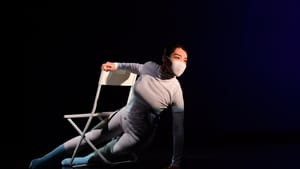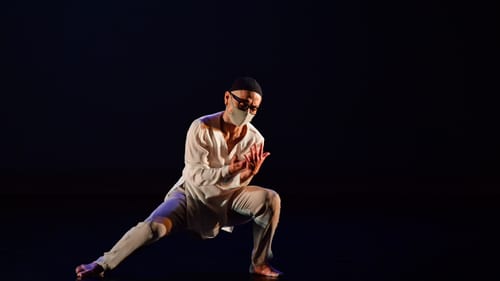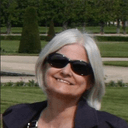Stay in the Loop
BSR publishes on a weekly schedule, with an email newsletter every Wednesday and Thursday morning. There’s no paywall, and subscribing is always free.
Community in solitude
The Annenberg Center presents Kun-Yang Lin/Dancers

As the pandemic raged through the height of the autumn arts season, some companies, like BalletX and the Philadelphia Orchestra, streamed performances created on film. The Annenberg Center for the Performing Arts chose a riskier path, to present performances streamed live from its stages. The risk usually paid off, but we were disappointed in November to learn that Kun-Yang Lin/Dancers had to be postponed until April because of Covid-19. I missed them, and worried a bit. But they made a stunning return with performances perhaps more deeply experienced because of their own trials during the pandemic.
I’ve seen a lot of pieces try to capture the pandemic in dance, and I didn’t like them much. Too soon, I thought; watching people dance in their living room or kitchen gets old the first time. But Kun-Yang Lin took a less literal path, by modifying excerpts from some of his longer works to capture the sense of loss and isolation that we have experienced, often with wistful melancholy that went to the heart. A premiere danced by Lin himself, in his first stage performance since 2013, was a fitting end to the evening.
Longing and escape
The program lists Inside, drawn from Lin’s full-length HOME/S. 9th St, as a solo, but it felt more like a duet between the dancer and a white folding chair. It began in silence, with Weiwei Ma, in white pants and long-sleeved shirt and bright blue socks, standing beside the chair. Lin grounds his choreography in mindfulness, and we sensed that in the deliberate way Ma put on her mask. She sat on the floor, slid her head between the seat and the back panel of the chair and flexed her toes, almost childlike.
The music, Helen Jane Long’s dreamy piano piece, carried us on a wave of longing as Ma tilted the chair on its side and danced through, over, and on top of it in a complex interplay of tangled emotion. Ma’s balance moves and extension were riveting, but it was her emotional connection that enveloped me in the dance. She is one of my favorite dancers, both because of her interesting technique and because of her ability to move her audience. Inside was one of my favorite pieces of the night.
If Inside danced the search for solace, Renaissance felt like a struggle to escape. The dark stage seemed empty, with just the eerie soundscape of Dmitri Yanov-Yanovsky and Quentin Chiappetta. Then the lights came up just enough to see a heap of red tulle begin to move. Annielille Gavino struggled until, at last, she shed the netting that enfolded her and emerged, sleek in a dark leotard, as if escaping a chrysalis.
Hope and urgency
Spring Duet brought hope with the sounds of nature. Falling water and the call of birds provided by Cory Neale’s sound design wove through the baroque strains of “Spring” from Vivaldi’s The Four Seasons. Keila Pérez-Vega and Wangbo Zhu evoked birds courting in movement that combined the modern with the classical, echoing the baroque and modern of the music. The background of green light reminded us of spring. It was a lovely piece, beautifully performed, but the emotional throughline felt a bit like it was telling a different story.

By contrast, The Calling, danced by the company in Jill Patterson’s pale flowing dresses and tunics, captured the mood of the moment. The dancers’ forceful gestures hit each slow drumbeat of Neale’s soundscape while a frenetic score of noise music threaded a faster tempo through the portentous knell. When the tempos came together, sharp movement shifted to whirling ecstasy. It pulled us in, hearts racing with the urgency of the dance and music.
Exploring solitude and community
Fittingly, my favorite piece was the last. We’d all been waiting for this: a premiere danced by the choreographer himself. The piece was set to Mahler’s mournful art song, Ich bin der Welt Abhanden Gekommen. The world may think I am dead, cries the singer, but the singer explains it is a withdrawl from the world’s turmoil to live in a quieter realm of art. During the discussion after the performance, Lin said that he’d received a grant from the National Endowment for the Arts to create a piece about aging and creativity. He was having trouble with the piece, but then the pandemic lockdown forced him to reacquaint himself with his own body movement. Like the narrator in the song, Lin explored his art in solitude, coming to terms with the loss of youth.
Lin entered as the dancers from The Calling slowly left the stage. Alone, he ran backward in ever-tightening circles, as if he could turn back time, or escape its toll, and mimed an ache in his leg, the cost of age. The dance itself was assured, though; gentle even. He filled every move with grace and feeling, like a slow waltz with an old love. Two dancers joined him on stage and the camera reversed its view to reveal the company at the front of the house, reaffirming community as they danced, separated but still together. It was impossible to watch and not reflect on my own youth and my enduring love of my own art and community of artists. I am not alone in that, I think.
Image description: Dancer Weiwei Ma, an Asian woman, poses close to the stage floor, pulling her body through the legs of a white folder chair. She wears a white facemask, shirt, and pants, with high blue socks.
Image description: Dancer/choreographer Kun-Yang Lin, an Asian man, rises from the stage floor with bent knees, looking imploringly at his hands in front of him. He wears a loose light-colored outfit with a matching facemask.
What, When, Where
The Annenberg Center for the Performing Arts presents Kun-Yang Lin/Dancers, livestreamed on April 22, 2021, and accessible on demand through April 24, 2021. 215-387-8200 or annenbergcenter.org.
Sign up for our newsletter
All of the week's new articles, all in one place. Sign up for the free weekly BSR newsletters, and don't miss a conversation.

 Camille Bacon-Smith
Camille Bacon-Smith